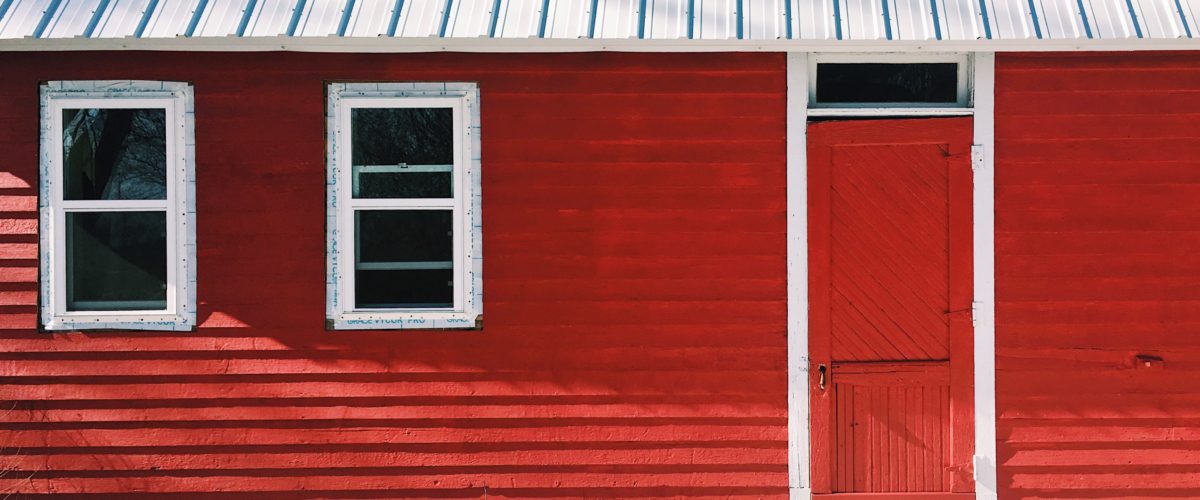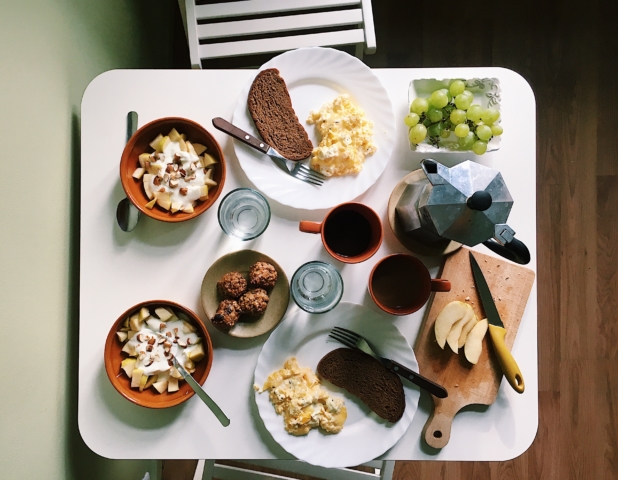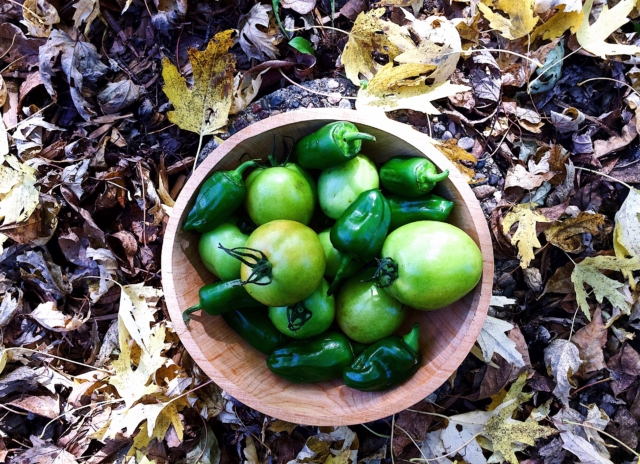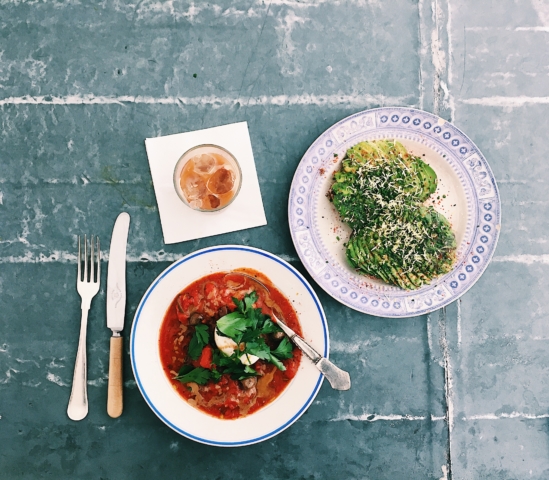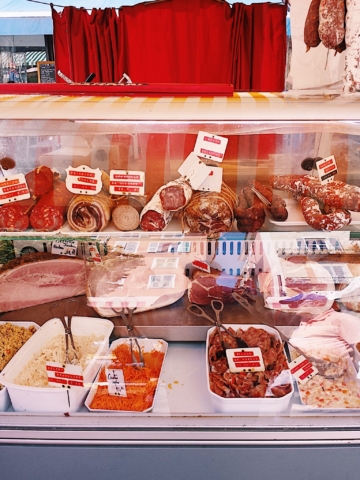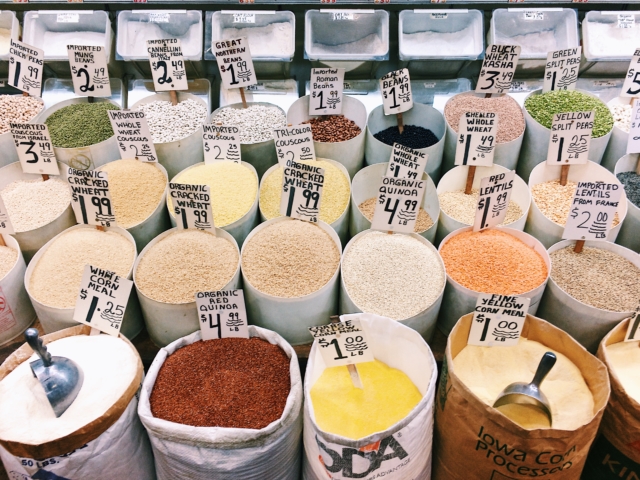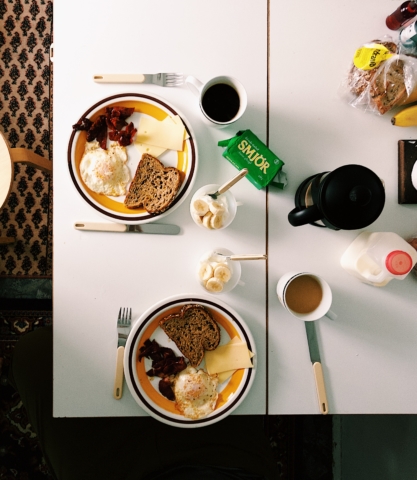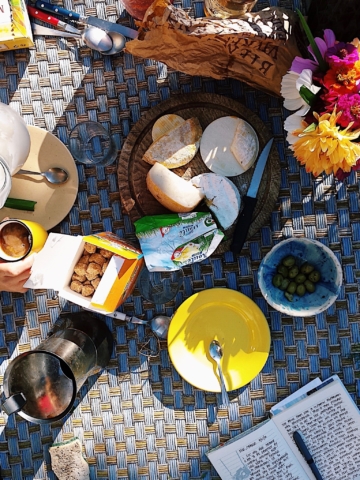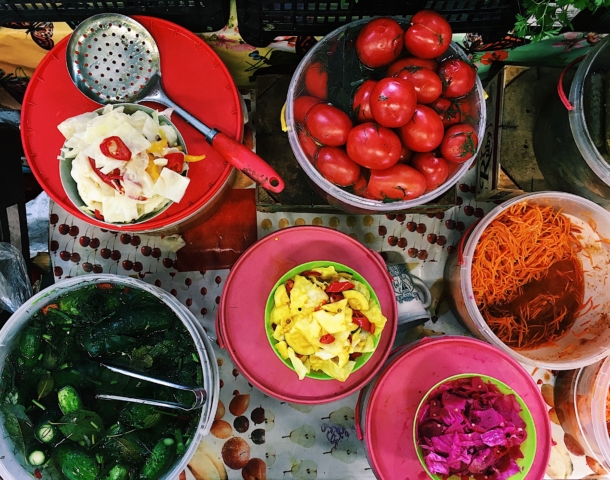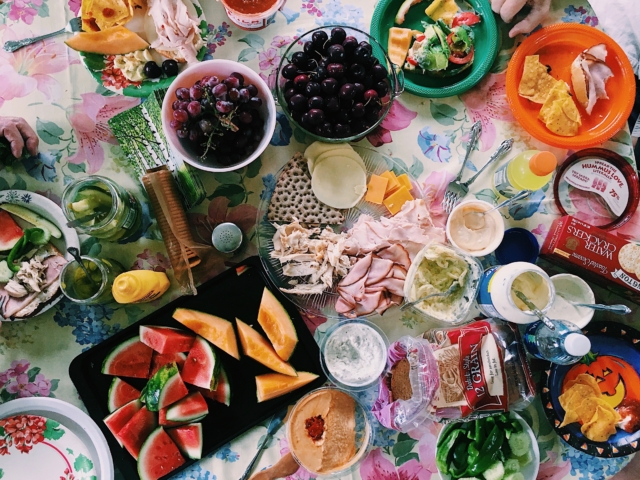There is a therapy in fields –
east, west, nothing speaks but the sky.
…
Could I live like this? I ask myself
and I know, somehow, I must.
More and more my life is peeling paint,
straight horizons.
…
Excerpt from At Otto’s Place
[Naomi Shihab Nye]
As the sun streams through the windows of the granary illuminating this table in light, my youth and my adulthood pirouette in a tangle of old and new. The granary stands as it did during my childhood but holds a fresh coat of red paint over the more familiar peeling white boards. As a welcome addition to the southeast corner of the building, windows and a remodel transform the remnant of a grain bin to a bright and warm granary studio. From this spot I can see the trio of oranges, pinks, and reds transition into the purple haze of the sunrise, the row of trees my dad and uncle planted when I was seven, the mulberry tree growing out of a cracked cement slab, the remains of our childhood treehouse, and the place we attempted a garden that quickly surrendered itself to deer and rabbits.
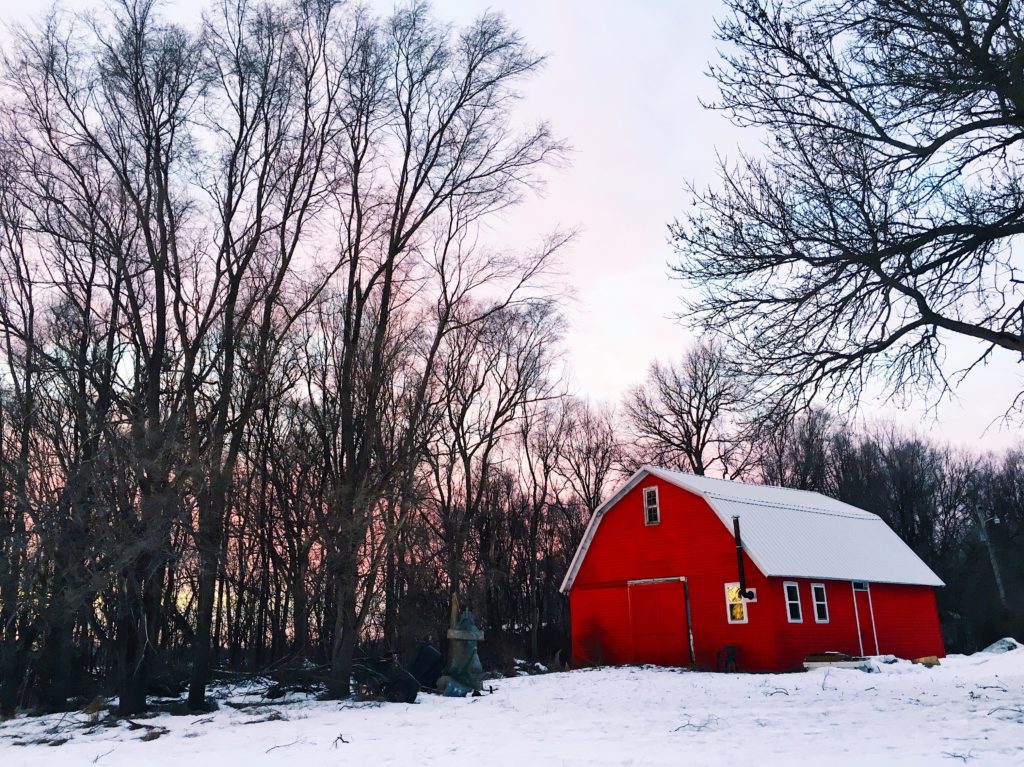 My dad imagined this studio as a place for his jewelry making, our family helped work on it, and the neighborhood showed up in force to complete it. We keep a running list of ideas for the granary, ranging from a full art retreat center, to a loft for extra beds, to converting each of the five grain bin rooms into separate creative spaces: a jewelry workshop, a pottery studio, a woodcarving space, a framing gallery, and a writing nook. I’m most excited to start creating space for the pottery studio but much needs to be done. Currently, four of the rooms hold piles of antiques: some remaining from my great-grandparents, some from the days of my parents’ antique business in the early 1990s, some indecipherable both in purpose and origin. Pieces of an old bowling alley floor run along the beams of the loft space above our heads. Used seed bags and hoses and axes are scattered about. Cobwebs and a heavy coat of dust from decades of farm life stand in the way of hosting the granary dinner party I’m already imagining.
My dad imagined this studio as a place for his jewelry making, our family helped work on it, and the neighborhood showed up in force to complete it. We keep a running list of ideas for the granary, ranging from a full art retreat center, to a loft for extra beds, to converting each of the five grain bin rooms into separate creative spaces: a jewelry workshop, a pottery studio, a woodcarving space, a framing gallery, and a writing nook. I’m most excited to start creating space for the pottery studio but much needs to be done. Currently, four of the rooms hold piles of antiques: some remaining from my great-grandparents, some from the days of my parents’ antique business in the early 1990s, some indecipherable both in purpose and origin. Pieces of an old bowling alley floor run along the beams of the loft space above our heads. Used seed bags and hoses and axes are scattered about. Cobwebs and a heavy coat of dust from decades of farm life stand in the way of hosting the granary dinner party I’m already imagining.
Yesterday I started working through the room that holds my great-grandfather Clarence’s workbench, left untouched since he stopped farming. The handmade drawers and repurposed cheese boxes depict the life of a farmer seventy years ago – nothing wasted or bought new. A hand built, wooden ski hangs on the wall, its leather shoe strap cracked and hardened with age. Jars with reddish, bronze liquids sit on the shelves with contents separated into enough layers to resemble a tiered dessert. “Don’t drink those,” my dad advised, as if the warning is necessary. Ancient Band-aid tins and red oil cans and rusted tools cover the workbench. I found a drawer of wheels of various shapes and sizes, spools of thread, calendars scribbled with corn prices and wheat acreages planted and the milk and egg production. I consider these treasures, not because they are now retro enough to sell at upscale antique stores, but because they hold part of our family’s history.
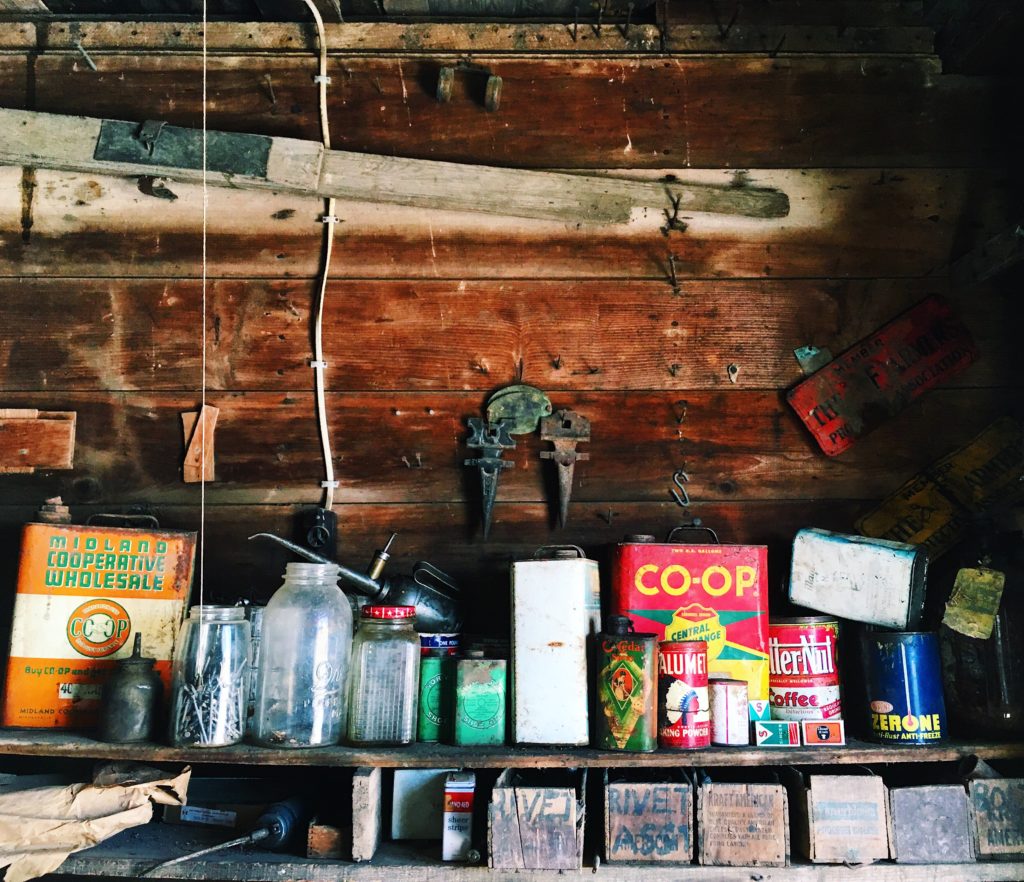 This past summer while visiting my grandparents in Alaska, I read the letters my great-grandfather and his siblings sent around debating a sale of the farm. Clarence volunteered to stay and run it, even though it wasn’t his original plan. With that decision, the Twin Spruce Farm, homesteaded in 1889, stayed in the family and he continued to farm after returning from the first world war. When my family moved from Alaska with the eventual purpose of settling in Wisconsin, our temporary stay at the farm turned into years, which turned into decades, and we never left.
This past summer while visiting my grandparents in Alaska, I read the letters my great-grandfather and his siblings sent around debating a sale of the farm. Clarence volunteered to stay and run it, even though it wasn’t his original plan. With that decision, the Twin Spruce Farm, homesteaded in 1889, stayed in the family and he continued to farm after returning from the first world war. When my family moved from Alaska with the eventual purpose of settling in Wisconsin, our temporary stay at the farm turned into years, which turned into decades, and we never left.
No matter what this granary turns out to be, the southeast studio is a place of light. The days seem longer out here. With just the wind rushing through the trees, the sun streaming in the windows, and the wood stove in the corner, it feels like there is enough time. Enough time to sit, enough time to be. The world is not so loud, so busy, so hectic. Here it is peaceful. Here it is quiet. Time is chronicled by the cars that pass on our gravel road: the mail carrier at 1pm and the school bus around 3:30. Nothing else is needed.
 It gives me a space to think, a place from which to look out across the fields. I’m reminded to stop and see the moon shining brightly through the bare branches, to see the stars sparkling above as I walk back to the house. Here there’s space to watch the squirrels, to think about my place in this world, my perspective, my days, my orbit, my life as one person among the horizontal expanse of rural Minnesota. Some days I don’t leave the farm. Some days it’s almost too quiet. But I am surrounded by a world that is alive, even in the dead of winter. So I am thankful for the granary studio – for a deeper perspective on the place I grew up, for the change of pace it provides, for a new threshold from which to look.
It gives me a space to think, a place from which to look out across the fields. I’m reminded to stop and see the moon shining brightly through the bare branches, to see the stars sparkling above as I walk back to the house. Here there’s space to watch the squirrels, to think about my place in this world, my perspective, my days, my orbit, my life as one person among the horizontal expanse of rural Minnesota. Some days I don’t leave the farm. Some days it’s almost too quiet. But I am surrounded by a world that is alive, even in the dead of winter. So I am thankful for the granary studio – for a deeper perspective on the place I grew up, for the change of pace it provides, for a new threshold from which to look.
In the coming season, may we all find and hold on to these spots that give us space to think, space to feel both alone and connected, space to pause, and space to provide comfortable familiarity and broadening newness.
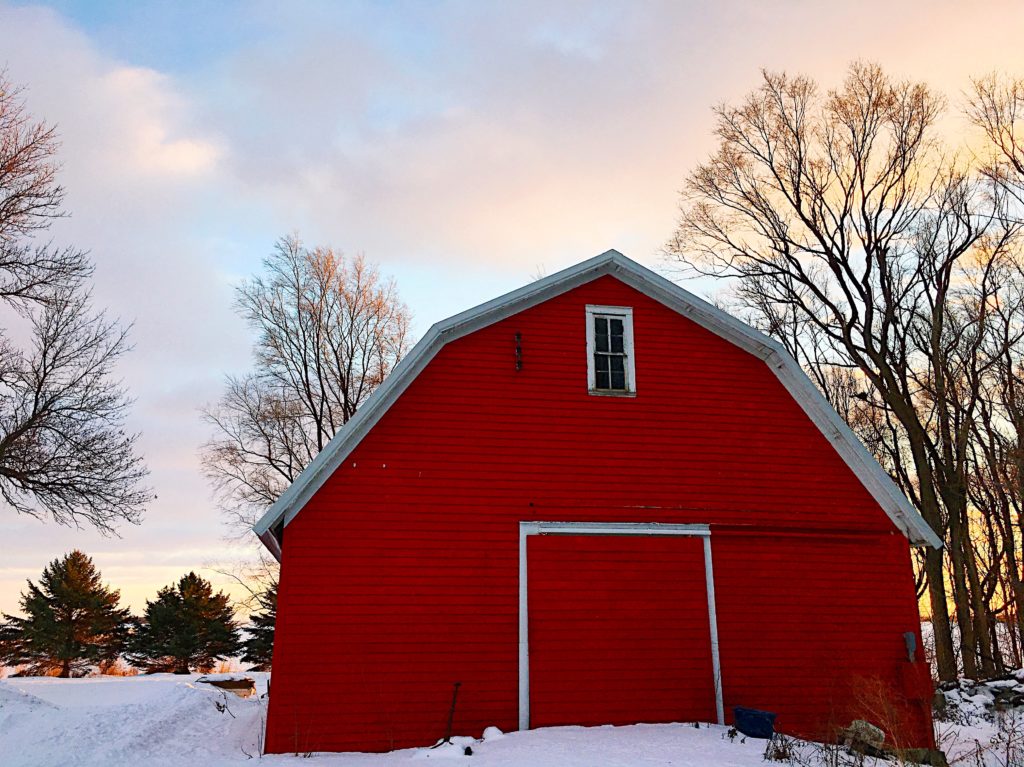
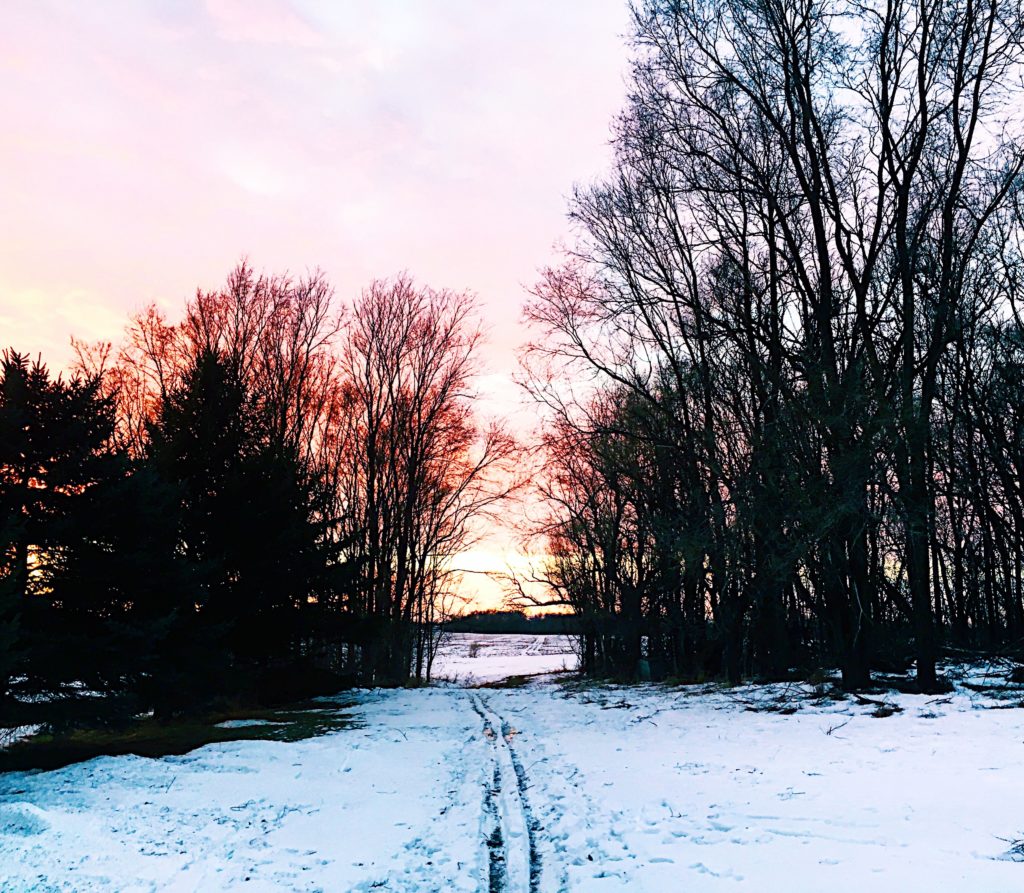

Elisabeth A. Fondell is a writer, potter, and food enthusiast living in the rural Midwest. She is currently working on Food Stories From Houston County, a project documenting stories of culinary resilience in Minnesota’s southeastern-most county through the Crystal Creek Citizen-Artist Residency.
Elisabeth began focusing on place-based food writing after receiving a grant from the Southwest Minnesota Arts Council to create a body of work celebrating the intersection of food and culture. See that exhibit here.

